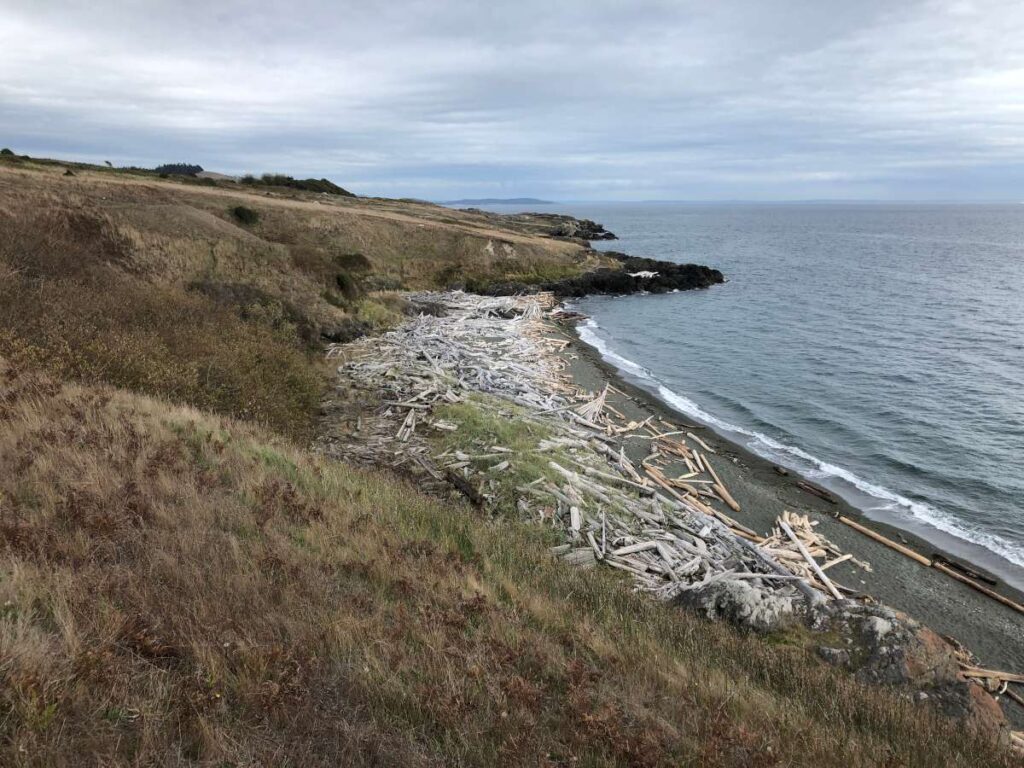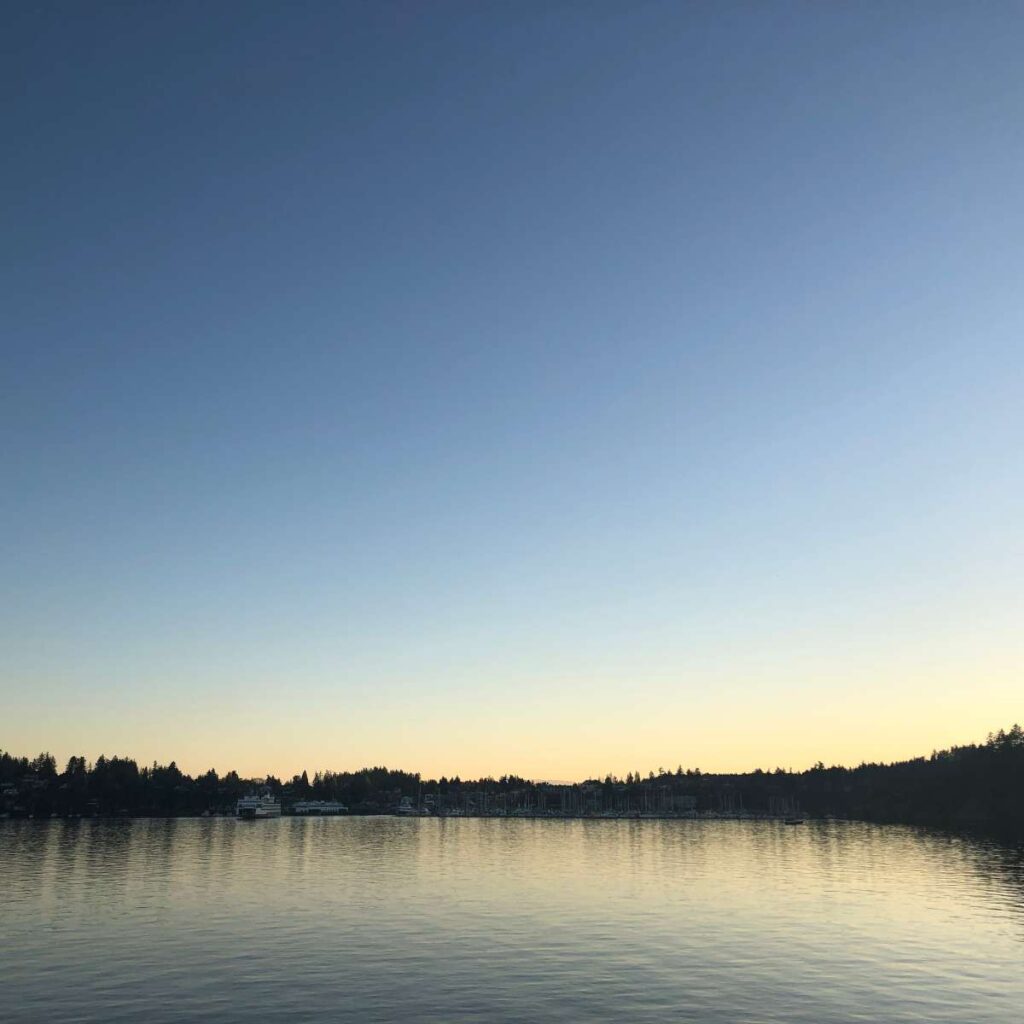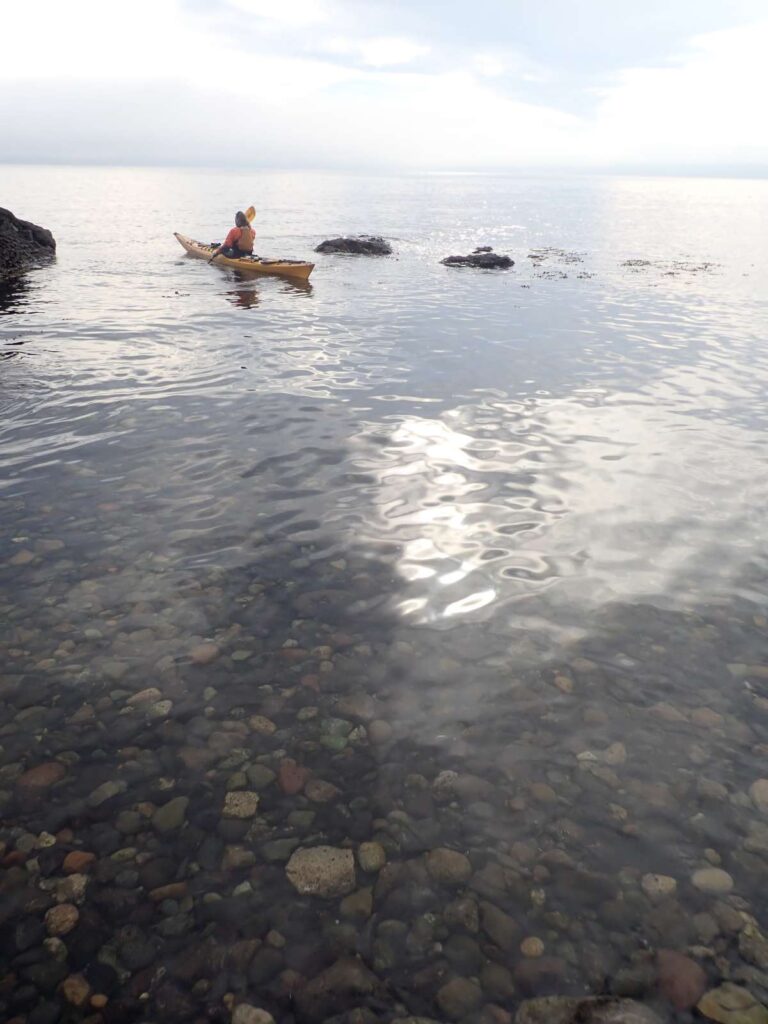I’m currently working on my book, The Kayak Chronicles, about kayaking in the San Juan Islands, and from time to time I’ll share little bits of my writing via this blog. I don’t know if these pieces will end up in the final draft, but I think they are pretty representative of the book overall and should give a taste of what’s to come.

An indifferent environment.
Unmoved by our histories, and unimpressed by our struggles.
So separate. So unique.
Yet so inspiring and captivating.
These were my first impressions of the landscape – and seascape – of the San Juan Islands. Perched on the broken edge of the continent, nothing about them opened up to me and said, “Welcome! You belong here!” The shoreline was steep and rocky, and the islands themselves, mountainous and dry. Time passed. Rain fell. The air warmed and then cooled. And it seemed to do so whether humans were there or not. Maybe it was all the exposed rock, laid bare by ancient glaciers, revealing the terrain upon which we toil, but as a young traveler first entering the the San Juan Islands, I was struck by an overwhelming sense of permanence, as if the whole place were abiding beyond the reach of human will.

The San Juans are nothing like the fertile valleys of the Pacific Northwest, such as the Skagit or the Willamette, with their rich soils and ancient groves providing shade and sustenance. Nor are they like the high alpine meadows of the Olympics or the Cascades, dappled with wildflowers and bisected by cold, clear streams. In the San Juans, the earth is dry, scattered with needles, and haphazard rocks protrude here and there. There are a few oak groves on some of the islands, but they are the product of human intention, maintained over centuries by fire, and are now slowly dying away as the land is reclaimed by more ancient ecosystems.
The islands struck me as a world thrown together without thought or care for the human condition. I’ve never been to Africa, but when I see pictures of the Kenyan Highlands or the Serengeti, I feel like I’m looking at images of home; my eyes go wide and long hidden parts of my DNA awaken. Seeing the San Juans for the first time, I felt like I was entering someone else’s home. The land didn’t care that I had arrived, and the ocean was busy with its own tumult and slipstream.
But my god, was it beautiful.

Despite all of my personal upheavals, during my time in the islands I found shelter and calm. I remember leaning against two hundred year old Douglas fir trees, gazing into an endless blue sky, or sitting on piles of driftwood, watching buffleheads feed in the swirling, icy waters. And then of course, there were the orcas, an ancient race of sentient beings ruling the sea with graceful elegance and unabashed power. In the San Juans I found solace in nature, but more importantly, I learned to feel peace without comfort. And that lesson has served me well ever since.